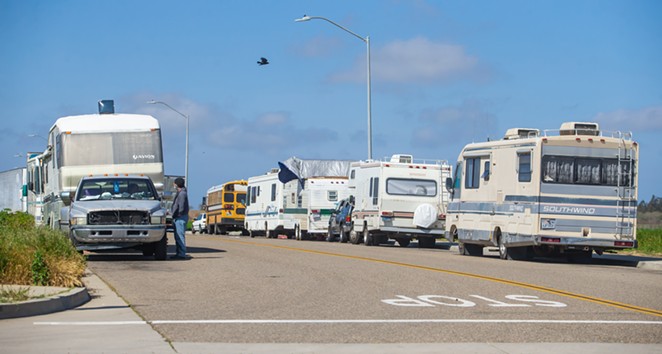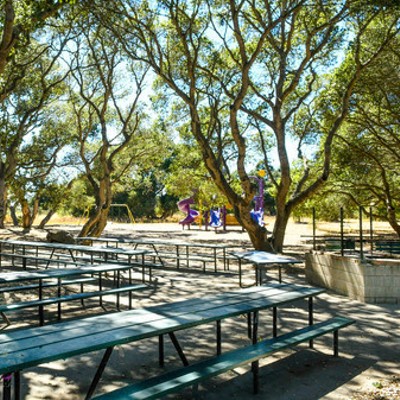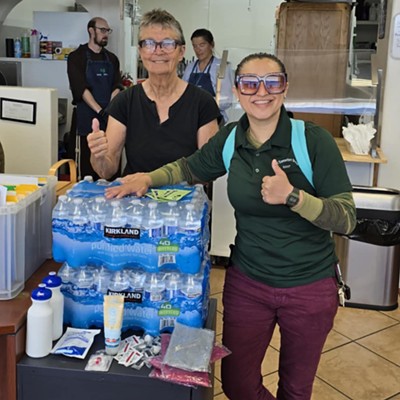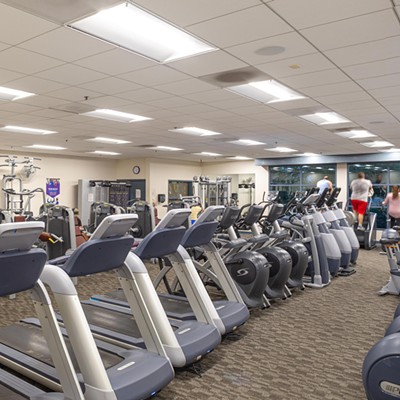More than 1,000 Santa Barbara County residents experienced homelessness for the first time in 2024—a jump from 849 in 2023, according to the county’s Point-In-Time Count.
Santa Barbara County Homeless Assistance Program Manager Kimberlee Albers told the Sun that the majority of these folks are often seniors or families with children falling out of housing who end up living in their vehicles.
“In our 2019 Point-In-Time Count we had [487] people living in their vehicles; in the 2024 Point-In-Time Count we are now over 700—greater than the number counted living on the streets,” Albers said.
The 2024 Point-In-Time (PIT) Count—an annual U.S. Department of Housing and Urban Development requirement to collect data on homelessness—showed that people who were unsheltered and living on the streets saw a 5 percent increase (from 591 to 622) from 2023 and 2024, while those living in their vehicles saw a 16 percent increase (from 611 in 2023 to 710 in 2024).
Households with children also saw a jump from 93 (272 people) in 2023 to 125 households (364 people) in 2024.
“Contributing factors to the number of families, persons living in vehicles, and persons experiencing homelessness for the first time include: the end of pandemic emergency rental assistance, lifting of the tenant protections including eviction moratoriums, soaring rents, and lack of affordable housing countywide,” according to the PIT Count
To address this growing population, the county received a nearly $8 million state grant to help link individuals residing in vehicle encampments with resources to ultimately get them into housing, Albers said. In partnership with New Beginnings, a local nonprofit that oversees several safe parking sites for individuals and families living in their vehicles, Santa Barbara County hopes to bring 300 individuals into a housing solution—and it must spend all of the state allocation within two years.
“We are excited to have dedicated resources for this group,” Albers said. “Fifty percent of the money has to be spent by June 30, 2025—that’s 13 months from now—and then the rest [has] until 2026. It’s very fast, getting a lot of staff hired and people into housing very quickly, which is exciting but also daunting.”
As part of the application process, the county identified 21 vehicle encampments, with four in Santa Maria, according to the April 23 Board of Supervisors staff report detailing the grant agreement. Albers added that the county and New Beginnings estimate they’ll serve about 53 vehicles in Santa Maria.
Within the grant, $3.9 million will help New Beginnings hire 24 people (with 10 in North County) to work as housing navigators, service coordinators, and outreach staff; $3 million is slotted for rental assistance and permanent housing flexible funds to transition; $700,000 for interim safe parking lots and interim housing like hotels; and $400,000 for administrative costs, according to the staff report.
The county and New Beginnings anticipate seeing 150 people enter permanent housing and the other half entering some form of interim placement like a shelter or safe parking sites during the grant’s lifespan, Albers said.
“Our focus is to not have a bunch of safe parking lots, but to house individuals in those areas,” Albers said. “We want some strategic expansion of safe parking to make sure people have places to go, but the focus of this grant is housing [people].”
New Beginnings runs safe parking sites in Santa Barbara, Lompoc, and Carpinteria. While the nonprofit’s been trying to establish a site in Santa Maria, the city still needs to create an ordinance that would allow for safe parking, Albers said.
“I think because there was a SLO County site that has had some trouble, … there’s still some need for assurance and education to assure residents that safe parking is a good idea in North County,” she said.
SLO County opened its pilot safe parking program in 2021 as a way to allow those in their vehicles to live on-site for 90 days while they sought case management from the Community Action Partnership of SLO County to transition to more stable housing, according to previous reporting from New Times—the Sun’s sister paper.
The program quickly soured as residents found the program was too far away from grocery stores, gas stations, and banks, and provided limited mental health resources, poor communication from service providers, and lax security, New Times reported. The site became overcrowded—reaching 80 people—and one resident died due to a fire that broke out in 2022. By 2023, SLO County announced plans to shutter the site and stop admitting new participants.
The New Beginnings safe parking program is different from SLO County’s because guests are only allowed to park overnight, not stay 24 hours a day, and it offers rapid rehousing and counseling services to members through the program.
“The program is actually celebrating its 20th anniversary. We are the longest safe parking program across the country,” said New Beginnings Executive Director Kristine Schwarz. “Even though we don’t have a lot in Santa Maria, we do work with people who live in their vehicles in Santa Maria. We just don’t provide shelter there.”
Santa Maria Assistant City Manager Chuen Wu told the Sun in a statement that the city code does not allow for parking lots to be used as safe parking sites, but it will remain engaged in discussions and strategies regarding the grant’s implementation.
“Santa Maria is supportive of those efforts and hopes that outreach will help guide individuals living in vehicles to permanent housing,” Wu said. “The city of Santa Maria has been proactive in facilitating the development of new housing, including affordable housing.”
Schwarz said that she hopes that this project and the nonprofit’s 20 years of successful programs in South County will “serve as an impetus for the city of Santa Maria to having a shelter lot located in Santa Maria,” but it won’t deter the program from assisting people in the city.
“I think people think that safe parking lots bring crime or bring people into their community with absolutely nothing to support them,” Schwarz said. “What we do see and have seen over and over again is if somebody is looking to prey upon vulnerable people, they are going to look for someone who is isolated.”
While New Beginnings has less financial assistance from North County cities through community development block grants, the state grant will give the nonprofit more dedicated funding to serve Santa Maria and work toward an “identifiable and achievable goal,” she added.
Last year, New Beginnings helped 204 veterans and households in the safe parking or rapid rehousing program find permanent housing with $1.3 million in 2023, she said.
“It’s a very exciting opportunity to very specifically dedicate [a] substantial amount of resources to an identifiable and achievable goal,” Schwarz said. “It can serve as a model for other approaches to other populations if it works.”
Reach Staff Writer Taylor O’Connor at [email protected].











